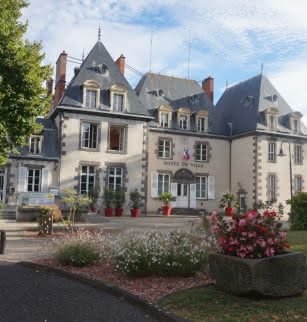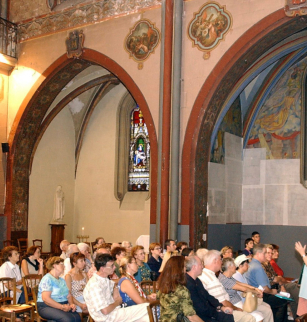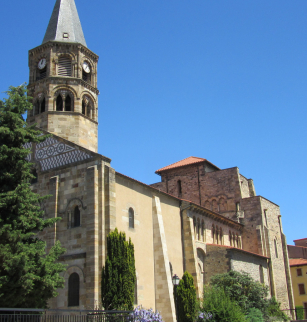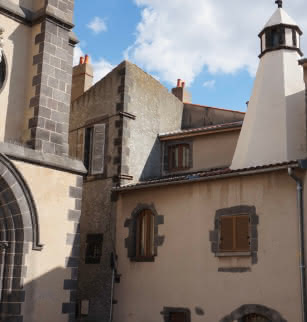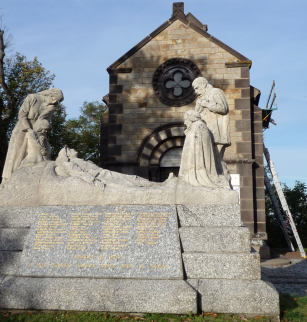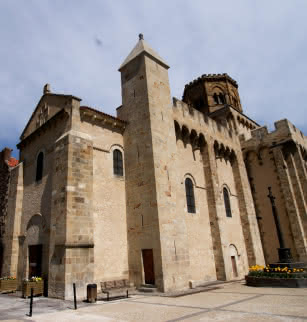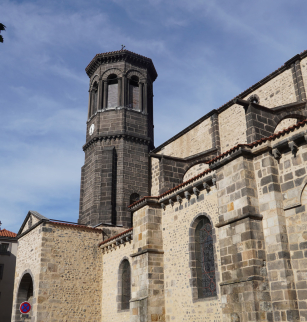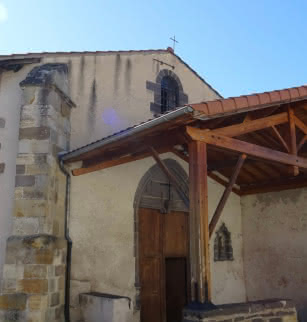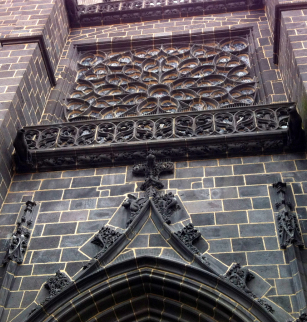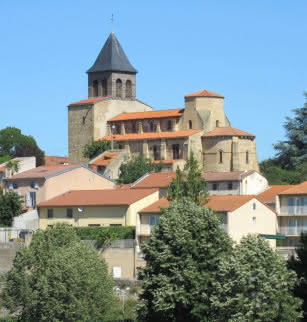Saint-Bonnet Church in Opme

.
Initially a castle chapel, Église Saint-Bonnet dates back to the 12th century. It has undergone several changes.It is protected as a Historic Monument.
Built in the early 12th century, Église Saint-Bonnet at Opme was first the château’s chapel. It housed the sepulchres of the lords from its origins. Guillaume V of Montrognon was the first person to be buried there. The parish of Opme was created in 1401. It was separate from that of Romagnat until the French Revolution. The lord appointed the priest.
Although the building is difficult to date, we can see that the church features a Romanesque nave and transept, revamped in the 13th and 18th centuries. The door on the western façade, leading directly to the château’s courtyard, was walled in the 17th century. The door features a semi-circular arch with keystones alternating in lava stone and arkose. The three-section choir was rebuilt in either the 17th or the 19th century, according to the Gothic layouts of the Middle Ages. It is framed by two chapels. In the 17th century, a new main door was created on the northern side to open the church towards the village. It retains its original leaves. On top of the church sits a bell-gable through which the bells are visible.
The church was listed on the historic monuments registry in 1959. Several items of its interior furnishings are also listed, such as the altarpiece and altar of the Virgin Mary, statues of Saint Roch, Saint Bartholomew, adoring angels and stalls. The church was restored in 2023.
Prices
- Free access.








